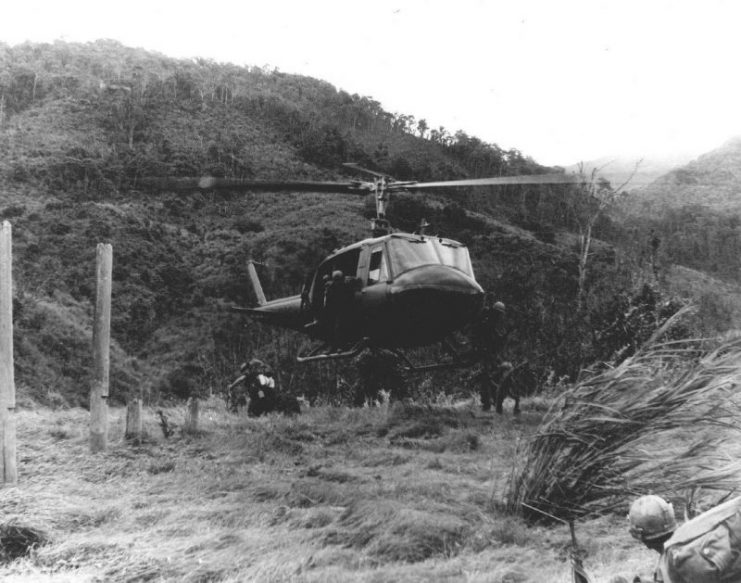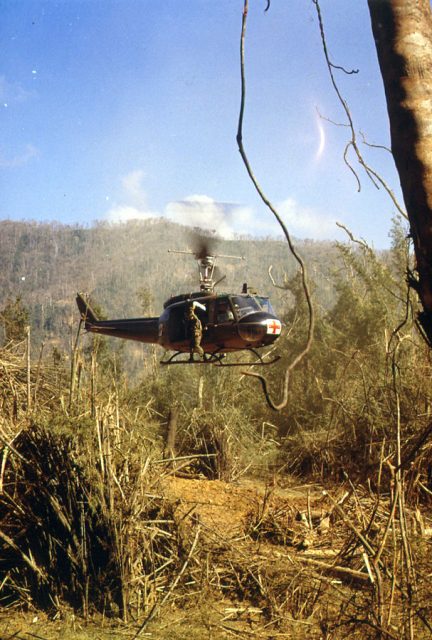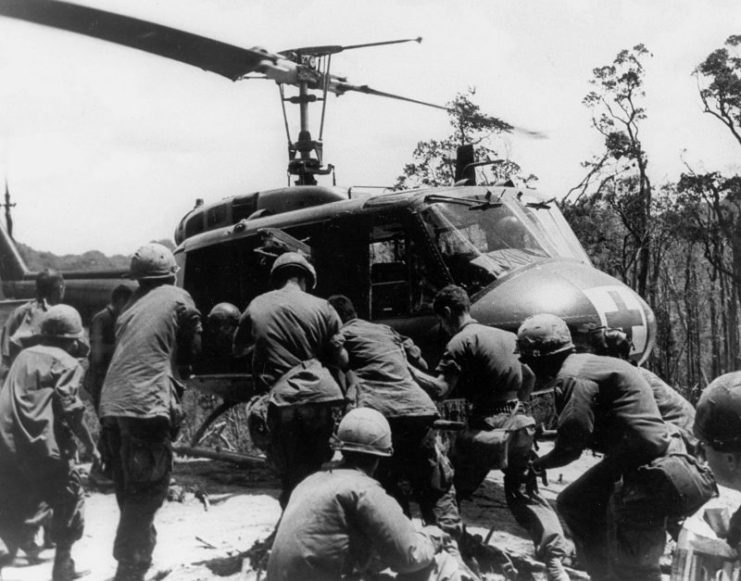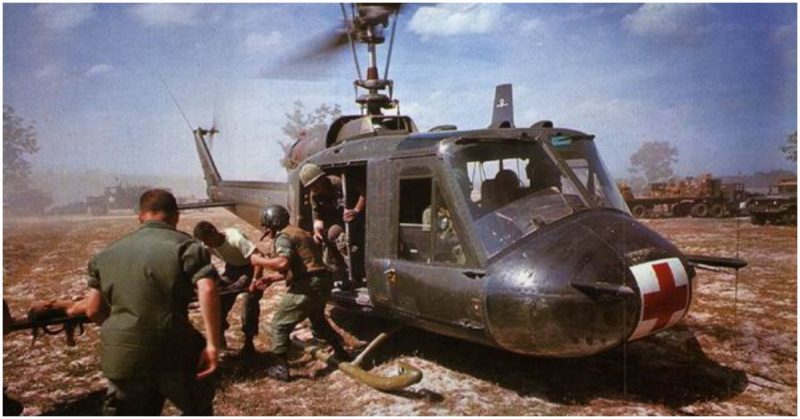During those very risky moments, the medic and crew chief would jump into the fire and load casualties into the helicopter with the assistance of nearby soldiers.
Among a variety of iconic scenes of the Vietnam War depicted in movies, documentaries, and news coverage, there is one in particular that makes this “first-ever televised conflict” instantly recognizable.
The image, accompanied by a specific sound, is the sight of a Bell UH-1 Iroquois or “Huey” flying over the jungle suppressing enemy fire, deploying soldiers, or evacuating wounded GIs.

While helicopters were used to some extent in Korea, it wasn’t until the Vietnam War that the idea of a helicopter ambulance corps was fully developed.
This was due to the necessity of using aerial transport to evacuate the wounded in Vietnam, as dictated by the terrain. Since most of the combat activity was in the jungle, roads proved useless even if they were nearby.

Date 16 October 1969
Ambushes and mines made land routes very unpredictable, for the jungle belonged to the Viet Cong.
However, the skies were off-limits for the guerrilla forces, making the Huey one of U.S. Army’s most important assets.
This article is dedicated to the “Dustoff” men–the medics and pilots who rushed into “hot” zones and willingly risked their lives to rescue as many soldiers they could. The name comes from the call sign of the 57th Medical Detachment which began operating in Vietnam in 1962.

“Dustoff” soon became synonymous with all helicopter ambulance units operating in Vietnam.
A well-trained and experienced crew could provide medical treatment for wounded personnel in the field within just 35 minutes.
The crew usually consisted of four men–two pilots with one acting as a commander, a medic assigned to evacuate evacuating the wounded, and the crew chief whose role was also to keep the chopper in top condition.
Once in action, the pilot and the helicopter commander remained in the aircraft, ready for take-off. The commander would maintain radio communication with the unit requesting evacuation and headquarters.

During those very risky moments, the medic and crew chief would jump into the fire and load casualties into the helicopter with the assistance of nearby soldiers.
It is important to note that most of these missions were undertaken during a skirmishes, so the helicopter would often come under a rain of small arms and mortar fire from the enemy.
Read another story from us: The ‘Huey’ – Legendary Workhorse of Vietnam War in 30 Pictures
Furthermore, the sheer size of a Huey would attract most of the enemy fire, making the evacuation crew an instant target.
The “Dustoff” men earned universal respect among Vietnam War servicemen due to their sacrifices and capabilities to act under such pressure. So, dive into this selection of photos of the “Dustoff” heroes and pay your respects.
